Fragrant Peonies: Care Guide for Flower
Fragrant Peonies are among the most cherished flowering plants, known for their lush, voluminous blooms and enchanting fragrance. These perennials thrive in gardens and floral arrangements, offering an elegant and timeless charm. Their heady scent ranges from sweet and citrusy to rich and spicy, making them a favorite for cut flowers and perfumes. With proper care, Peonies can bloom for decades, becoming a long-term highlight in any garden. They prefer well-draining soil, full sun, and cool winters to stimulate bud formation. Once established, they require minimal maintenance, apart from occasional watering, feeding, and support for their heavy blossoms. Their beauty peaks in late spring to early summer, creating a stunning visual and aromatic display. Whether grown in borders, beds, or containers, Fragrant Peonies add sophistication and a delightful scent to any outdoor space, making them an essential addition to flower enthusiasts’ collections. Our gardening blog is a perfect place to find all the information you need!
Why Choose Fragrant Peonies for Your Garden or Home?
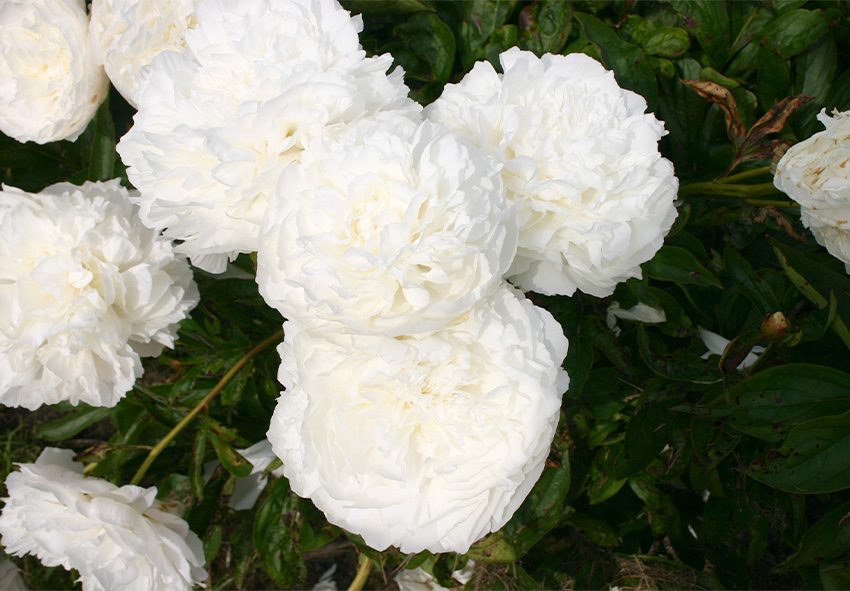
Fragrant Peonies are a perfect choice for both home gardens and indoor floral arrangements, offering a combination of beauty, longevity, and an irresistible scent. Their fragrance varies by variety, with some exuding a delicate rose-like perfume, while others have a citrusy or spicy aroma. This makes them an excellent addition to gardens where scent plays a crucial role in creating a welcoming atmosphere. Their large, showy flowers bloom in various colors, from soft pastels to deep reds, allowing them to complement any landscape design.
Beyond their aesthetic appeal, Peonies are incredibly hardy and long-lived, often thriving for decades with minimal care. They require well-draining soil and full sun but are otherwise resilient, making them a low-maintenance option for gardeners. Additionally, their strong stems and lush foliage provide season-long interest, even after flowering ends.
As cut flowers, Fragrant Peonies are highly prized due to their long vase life and intoxicating scent. Whether placed in a bouquet, centerpiece, or bridal arrangement, they bring elegance and romance to any setting. Given their ease of care and lasting beauty, Peonies are a worthwhile investment, providing a luxurious floral experience season after season.
The Most Popular Fragrant Peonies Varieties and Their Characteristics
There is a vast selection of Fragrant Peonies, each offering unique charm through its bloom shape, color, and scent intensity. Some of the most beloved varieties include ‘Sarah Bernhardt,’ a classic pale pink Peony with an intoxicatingly sweet fragrance and large, ruffled petals. ‘Festiva Maxima’ is another timeless favorite, featuring crisp white blossoms accented with crimson flecks and a fresh, clean scent. For those who love bold hues, ‘Kansas’ provides vibrant red flowers with a mild, pleasant fragrance, making it a striking focal point in any garden.
If a citrusy aroma is preferred, ‘Duchesse de Nemours’ stands out with its creamy white petals and lemony perfume. ‘Raspberry Sundae’ is a breathtaking variety with pastel pink and yellow tones, delivering a delicate, fruity scent. Meanwhile, ‘Bowl of Beauty’ captivates with its unique anemone-shaped blooms, combining soft pink outer petals with creamy centers and a light, sweet fragrance.
Whether seeking a Peony for bold garden statements, elegant floral arrangements, or subtle aromatic additions, these varieties provide a wide range of options. Their resilience, ease of growth, and ability to return year after year make them a rewarding choice for any Peony lover, ensuring a season filled with exquisite blooms and delightful fragrance.
Classic Rose-Scented Peonies
Classic rose-scented Peonies are beloved for their rich, floral fragrance, reminiscent of traditional garden roses. These varieties not only bring a timeless charm to gardens but also fill the air with an enchanting perfume. Their lush, ruffled petals and soft pastel hues make them a favorite among flower enthusiasts. If you love the classic scent of roses, these Peonies are a must-have.
- ‘Sarah Bernhardt’ – One of the most famous Peonies, this variety features large, double red blooms with an intensely sweet rose fragrance.
- ‘Duchesse de Nemours’ – A stunning white Peony with a citrusy-rose scent and creamy, delicate petals.
- ‘Madame de Verneville’ – A romantic, pale pink bloom with a strong old-rose fragrance.
- ‘Mrs. Franklin D. Roosevelt’ – A soft blush-colored variety with a pleasant, rich floral aroma.
These Peonies are perfect for garden borders or cut flower arrangements, offering beauty and a delightful scent.
Citrus and Spicy-Scented Peonies
For those who enjoy a fragrance with a twist, citrus and spicy-scented Peonies provide a refreshing alternative to traditional floral scents. These varieties have a unique blend of bright citrus notes or warm, peppery undertones that make them stand out in any garden. Their vibrant colors and distinctive aromas add an exciting sensory experience to any floral display.
- ‘Festiva Maxima’ – A pure white Peony with crimson flecks and a crisp, citrus-like fragrance.
- ‘Bowl of Beauty’ – This variety boasts anemone-shaped pink and cream blooms with a fresh, spicy-sweet scent.
- ‘Red Charm’ – A deep red, velvety Peony with a warm, spicy aroma.
- ‘Honey Gold’ – A soft yellow Peony with a light, citrusy fragrance.
These Peonies are excellent for those who appreciate bolder scents and wish to add variety to their fragrant flower collection.
Sweet and Fruity Fragrant Peonies
If you love the scent of fresh fruit blended with floral sweetness, these Peonies are perfect for you. Their fragrance ranges from delicate, honeyed notes to tropical and berry-like aromas, making them a refreshing addition to any garden. Along with their captivating scents, these Peonies feature beautiful hues of coral, peach, and soft pink.
- ‘Coral Charm’ – A breathtaking coral-colored Peony with a soft, sweet citrus fragrance.
- ‘Raspberry Sundae’ – A pastel pink and yellow variety with a deliciously fruity scent.
- ‘Do Tell’ – A Japanese-style Peony with pink petals and a light, honeyed aroma.
- ‘Pink Hawaiian Coral’ – A peach-pink Peony with a delicate tropical fragrance.
These Peonies work well in floral arrangements, providing both stunning colors and an irresistible fruity aroma that enhances any setting.
Exotic and Rare Fragrant Peonies
For those seeking something truly special, exotic and rare fragrant Peonies offer unique scents and extraordinary blooms. These varieties are highly sought after due to their intense perfume and distinctive petal formations, making them a collector’s dream.
- ‘Dr. Alexander Fleming’ – A rich pink Peony with an exceptionally strong, spicy-sweet fragrance.
- ‘Angel Cheeks’ – A rare, soft pink Peony with a heavy, intoxicating fragrance.
- ‘Henry Bockstoce’ – A bold red Peony with a rich, velvety floral scent.
- ‘Eden’s Perfume’ – One of the most intensely scented Peonies, featuring lush, double pink blooms.
These Peonies add drama and elegance to any garden, combining visual beauty with an unforgettable fragrance that lingers in the air long after blooming.
How to Plant and Grow Fragrant Peonies Successfully
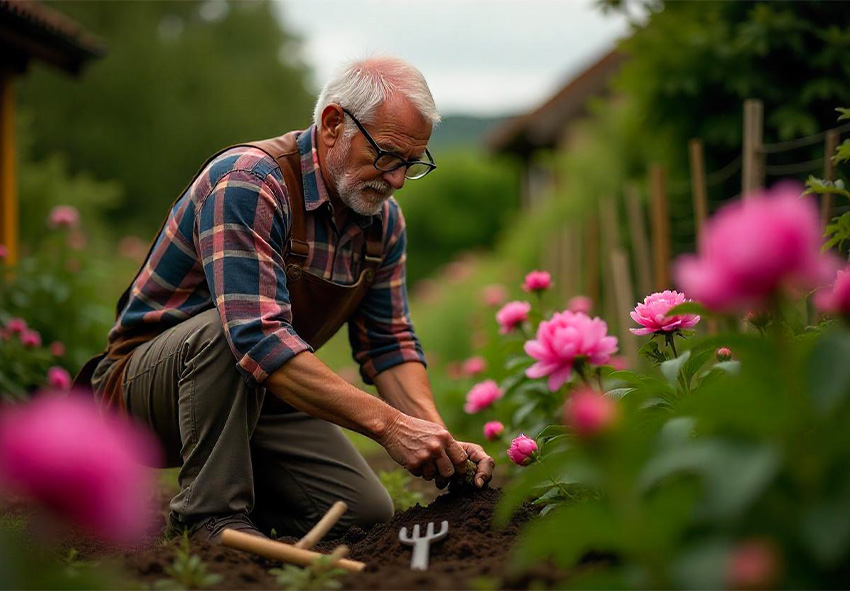
Fragrant Peonies are a stunning addition to any garden, offering lush blooms and an irresistible scent. To ensure successful growth, it is essential to plant them correctly and provide proper fragrant peony bulb care. Choosing high-quality Peony roots or tubers is the first step. Look for firm, healthy roots with multiple eyes, as these will produce the strongest plants. Avoid tubers that appear shriveled, moldy, or excessively soft.
Selecting the right planting location is equally important. Peonies thrive in well-draining, nutrient-rich soil with a pH between 6.5 and 7.0. They require full sunlight for at least six hours a day, as inadequate light can lead to weak growth and fewer blooms. When planting, position the roots one to two inches below the soil surface and space them about three feet apart to allow for proper air circulation.
After planting, water deeply to help establish the roots, but avoid overwatering, as excessive moisture can lead to rot. Mulching around the base of the plant helps retain moisture, regulate temperature, and protect against frost. Providing shelter from strong winds ensures sturdy, upright stems. With the right conditions and care, Fragrant Peonies will flourish, rewarding gardeners with their spectacular blooms and delightful fragrance for many years.
Step-by-Step Guide to Planting Fragrant Peonies
Planting Fragrant Peonies requires attention to detail, from choosing the right roots to ensuring proper soil and care. Providing the right environment will encourage strong root development and abundant blooms. By carefully planting at the correct depth and spacing, watering properly, and protecting the plants from environmental stress, you will enjoy healthy Peonies for years.
Step 1: Choosing Healthy Fragrant Peony Roots or Tubers
Selecting high-quality roots or tubers is crucial for robust growth. Healthy Peony roots should be firm, plump, and have multiple visible “eyes,” which are small buds that will develop into stems. These eyes are essential for producing strong and vibrant blooms. When purchasing Peony roots, avoid those that appear shriveled, excessively dry, or moldy, as these may struggle to establish themselves in the soil. Additionally, roots that feel too soft may be rotting and should not be planted.
Opting for premium, disease-free tubers will provide the best chance for long-term success. Properly sourced Peonies will establish quickly, producing lush foliage and fragrant flowers. The quality of the tubers directly affects plant health, so it is important to invest in the best ones available. A strong foundation begins with selecting the right planting material, ensuring healthy growth for years to come.
Step 2: Choosing the Right Soil and Location
Peonies thrive in well-draining, nutrient-rich soil that supports strong root development. The ideal soil should have a pH between 6.5 and 7.0, as Peonies prefer slightly acidic to neutral conditions. Amending heavy clay soil with compost or sand can improve drainage, preventing water from pooling around the roots and causing rot.
Choosing the right location is just as important as the soil. Peonies require full sunlight, meaning they should receive at least six hours of direct sun per day. A bright, open area with good air circulation is ideal, as stagnant air can lead to fungal diseases.
Avoid planting Peonies in low-lying areas where water tends to collect, as excess moisture can damage the roots. The right combination of soil and sunlight will create an optimal environment, allowing Peonies to develop strong stems, lush foliage, and abundant, beautifully scented blooms.
Step 3: Proper Planting Depth and Spacing
Planting Peonies at the correct depth is key to successful growth. The tubers should be placed one to two inches below the soil surface, ensuring that the eyes are facing upward. If planted too deeply, the Peony may develop strong foliage but fail to bloom properly. When placing the roots in the soil, gently spread them out to encourage even growth and prevent crowding. Peonies also require sufficient space to grow, so spacing each plant about three feet apart allows for adequate airflow, reducing the risk of fungal infections and disease.
Proper spacing also ensures that each Peony has enough access to sunlight and nutrients, preventing competition among plants. By carefully positioning and spacing the roots, gardeners can create an environment where Peonies will thrive, producing strong stems and abundant flowers. Correct planting depth and spacing set the foundation for long-term health and continued flowering.
Step 4: Watering After Planting
Watering is a critical step in establishing newly planted Peonies. After planting, water thoroughly to help settle the soil around the roots and eliminate air pockets. This initial deep watering encourages strong root development, allowing the plant to establish itself quickly. However, while Peonies need moisture, overwatering can be detrimental. The soil should be kept evenly moist but never soggy, as excessive moisture can cause the roots to rot.
Peonies do not require frequent watering once established, as they are relatively drought-tolerant. It is best to check the top layer of soil before watering, ensuring that it has dried slightly before adding more moisture. During periods of heavy rain, reduce watering to prevent oversaturation. By maintaining proper moisture levels, Peonies will develop deep, resilient root systems, supporting healthy growth and prolific blooming throughout the growing season.
Step 5: Providing the Right Conditions for Growth
Ensuring that Peonies receive the best possible growing conditions will help them thrive. While Peonies are hardy plants, they can be vulnerable to extreme weather. Strong winds can cause their tall stems to bend or break, so planting them near a natural wind barrier, such as a fence or shrubs, can provide protection. Late frosts can also damage new growth, so applying mulch around the base of the plant helps regulate soil temperature and protect emerging shoots.
Mulching also helps retain moisture and suppress weeds, reducing competition for nutrients. As Peonies grow, removing spent flowers encourages further blooming and redirects energy into root development. By maintaining an ideal environment with stable temperatures, adequate sun exposure, and proper care, Peonies will flourish, producing lush foliage and spectacularly fragrant flowers year after year. Investing time in their care ensures a long-lasting and rewarding addition to any garden.
Essential Fragrant Peony Care Tips for Healthy Growth
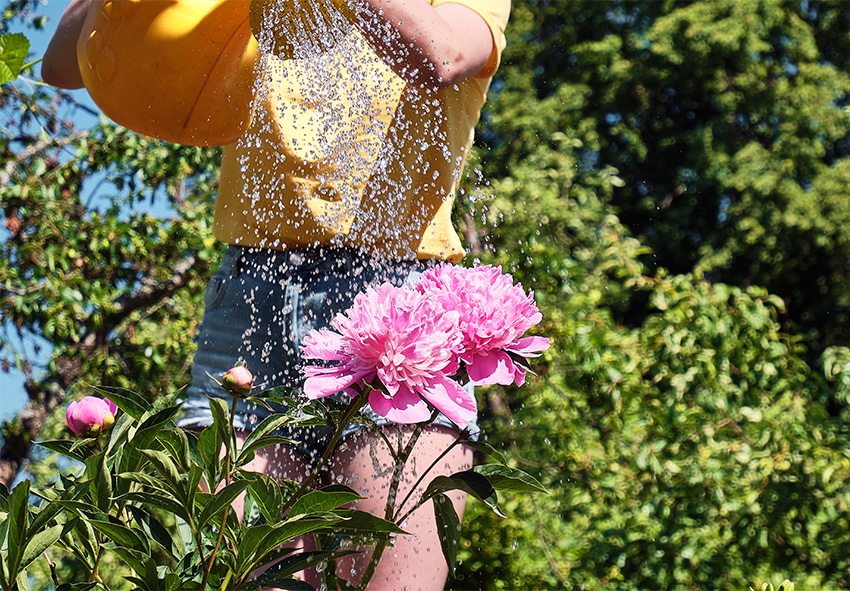
Fragrant Peonies are relatively low-maintenance, but providing them with the right care ensures they produce healthy foliage and abundant blooms year after year. These plants thrive when given proper watering, fertilization, sunlight, and structural support. By following essential care practices, you can maintain vigorous and long-lasting Peonies in your garden.
Watering is crucial to Peony health. Deep watering once a week helps maintain consistent soil moisture, but overwatering should be avoided to prevent root rot. It is best to water at the base of the plant rather than on the leaves to reduce the risk of fungal infections. Fertilization also plays a key role in Peony growth. A balanced fertilizer (10-10-10) applied in early spring promotes strong stems and abundant blooms. However, fertilizing should be stopped once the flowers begin to bloom, as excess nutrients may weaken the plant.
Proper light and temperature conditions are necessary for Peonies to thrive. These plants require at least six hours of full sun per day and should be protected from extreme cold with a layer of mulch in winter. Additionally, taller Peony varieties may require support, as heavy blooms can cause stems to droop. Using stakes or Peony cages can help maintain upright growth and prevent breakage. Regular deadheading encourages continuous flowering and improves overall plant health.
How to Care for Fragrant Peonies After Planting
It’s important to know how to care for fragrant peonies in the garden just as to learn how to care for fragrant peonies indoors. Caring for Fragrant Peonies properly after planting ensures they grow strong and bloom abundantly. These plants require regular watering, the right fertilization schedule, and adequate sunlight to thrive. Additionally, providing structural support for taller varieties can prevent breakage. Following these essential care steps will help keep your Peonies healthy year after year.
Step 1: Watering Fragrant Peonies the Right Way
Watering is essential for Peony health, but overwatering can lead to root rot. Deep watering once a week is ideal, ensuring the soil remains evenly moist but not waterlogged. Newly planted Peonies need consistent moisture until they establish strong roots. Once mature, they are relatively drought-tolerant but still benefit from occasional deep watering during dry spells. Always water at the base of the plant rather than on the leaves to prevent fungal diseases.
Early morning is the best time to water, as it allows excess moisture to evaporate throughout the day. Avoid letting water sit on the foliage overnight, as damp conditions can encourage mildew and other fungal issues. Adding mulch around the base of the plant helps retain moisture and regulate soil temperature, keeping the roots cool in summer and insulated in winter.
Step 2: Fertilizing for Strong Growth
Fertilization supports healthy Peony growth and encourages lush blooms. In early spring, before new growth emerges, apply a balanced fertilizer such as 10-10-10 to enrich the soil with essential nutrients. A slow-release fertilizer is beneficial as it provides nutrients over an extended period.
Once the Peonies begin to bloom, fertilization should be stopped to prevent overfeeding, which can result in weaker stems and fewer flowers. Organic compost or well-rotted manure can also be used as a natural alternative to synthetic fertilizers. Applying a layer of compost around the base of the plant in early spring provides nutrients while improving soil structure.
It is important not to over-fertilize, as excessive nitrogen can promote leafy growth at the expense of blooms. A final light feeding after the flowers fade can help strengthen the roots for the following growing season, ensuring an even more spectacular display next year.
Step 3: Providing Proper Light and Temperature
Fragrant Peonies require at least six hours of full sunlight daily to thrive. Without adequate light, they may develop weak stems and produce fewer blooms. A sunny garden location with well-draining soil is ideal for optimal growth. If planting Peonies in a region with extremely hot summers, providing partial afternoon shade can help protect them from excessive heat stress.
Peonies also need a period of cold dormancy to bloom successfully. In colder climates, they naturally receive this chilling period, but in warmer zones, they may struggle to flower. Mulching in late fall helps insulate roots and protect them from extreme winter temperatures.
During particularly harsh winters, covering plants with straw or burlap can offer additional protection. Sudden temperature fluctuations should be minimized by avoiding planting near buildings or paved surfaces that retain heat. Ensuring stable growing conditions will help Peonies thrive and produce abundant, fragrant flowers each year.
Step 4: Supporting Tall Stems (If Needed)
Many Peony varieties produce large, heavy blooms that can cause stems to droop or bend under their weight. To maintain an upright, tidy appearance, staking or using a Peony cage is recommended. These supports should be installed early in the growing season before stems reach their full height. A circular Peony cage provides the best structural support, keeping stems upright while allowing room for natural growth. If using stakes, gently tie individual stems with soft plant ties to avoid damaging them.
Rotating the plant’s position every few weeks can also encourage straight, even growth by preventing the stems from leaning toward a light source. Deadheading spent blooms helps direct energy toward root and foliage development, promoting stronger stems for the following season. Pruning back the foliage in late autumn after the first frost ensures healthier regrowth in spring, keeping Peonies robust and ready for another season of stunning blooms.
How to Encourage Your Fragrant Peonies to Bloom Again
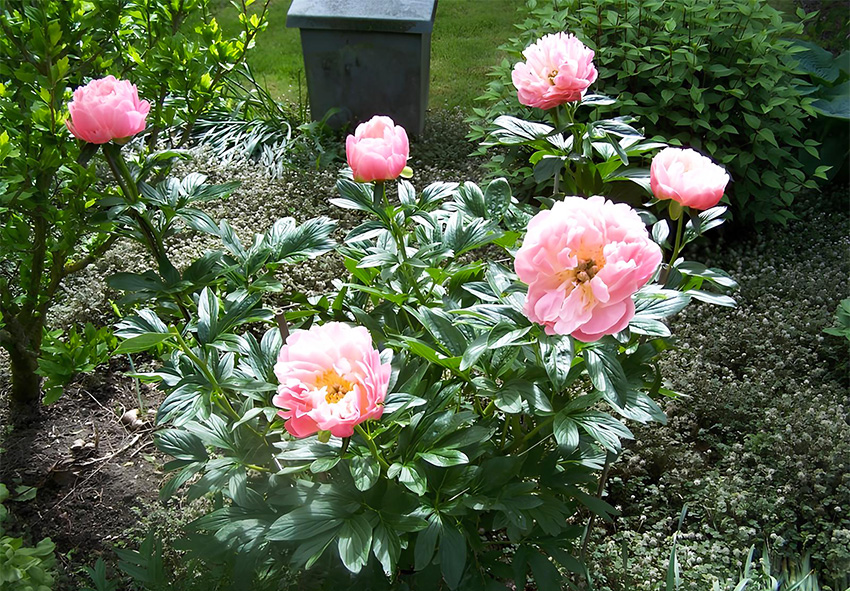
Fragrant Peonies are known for their stunning, scented blooms, but sometimes they fail to rebloom in subsequent years. Several factors can contribute to this issue, including inadequate post-bloom care, poor soil conditions, and overcrowding. To ensure consistent flowering each season, proper maintenance techniques must be followed. Deadheading, winter preparation, and occasional division help maintain the plant’s health and encourage vigorous reblooming. Providing optimal growing conditions, including sufficient sunlight, well-draining soil, and proper fertilization, will also improve flowering. By following these essential steps, gardeners can enjoy a spectacular display of peonies year after year.
Step-by-Step Guide to Ensuring Reblooming
Encouraging peonies to bloom again requires consistent care throughout the year. Deadheading spent flowers prevents seed formation and redirects the plant’s energy to root development. Preparing the plant for winter by cutting back foliage and insulating roots helps protect it from harsh conditions. Dividing and replanting older peonies rejuvenates growth for better blooms.
Step 1: Deadheading and Post-Bloom Care
Once peony flowers fade, deadheading is crucial to maintain plant health and encourage future blooms. Removing spent flowers prevents the plant from expending energy on seed production, allowing it to focus on root and foliage development. To properly deadhead, cut the stem just above the first set of healthy leaves. This helps retain enough foliage for continued photosynthesis, which strengthens the plant for the next growing season. Additionally, keeping the plant well-watered and applying a balanced fertilizer after flowering can replenish lost nutrients.
Avoid pruning back the leaves too early, as they play a crucial role in storing energy for next year’s blooms. Ensuring that peonies receive at least six hours of daily sunlight will also improve flower production. Regular maintenance, including removing any diseased or yellowing foliage, helps promote strong, healthy growth and sets the stage for a robust bloom cycle the following spring.
Step 2: Preparing Fragrant Peonies for Winter
Proper winter preparation is essential for maintaining peony health and ensuring a successful rebloom in the following season. As temperatures drop in late fall, herbaceous peonies should be cut back to ground level. This helps prevent disease and removes any dying foliage that could harbor pests. Tree peonies, however, should not be cut back, as they bloom on old wood. Applying a layer of mulch around the base of the plant insulates the roots from extreme cold, preventing damage during harsh winters.
Peonies in particularly cold climates may benefit from additional protection, such as straw or pine needles, which help regulate soil temperature. However, it is important to remove excess mulch in early spring to prevent rot. Avoid disturbing the roots during this period, as they are entering dormancy and require rest. A well-prepared winter routine ensures peonies will emerge strong and ready to bloom again in spring.
Step 3: Dividing and Transplanting Fragrant Peonies
Dividing peonies periodically helps maintain their vigor and prevents overcrowding, which can hinder blooming. Mature peonies that have not bloomed well for several years may benefit from division. The best time to divide and transplant peonies is in early fall, when the plant is entering dormancy. Carefully dig around the root system and lift the plant, ensuring minimal damage to the tubers. Using a sharp, clean knife, separate the root clump into sections, ensuring each division has at least three to five healthy “eyes,” which are the growth points for new stems.
Replant immediately in nutrient-rich, well-draining soil, positioning the eyes just one to two inches below the surface. Peonies planted too deeply may fail to bloom. Water thoroughly after transplanting and apply a light layer of mulch for protection. Although newly divided peonies may take a season or two to establish, they will reward gardeners with stronger, more prolific blooms over time.
Common Problems with Fragrant Peonies and How to Fix Them
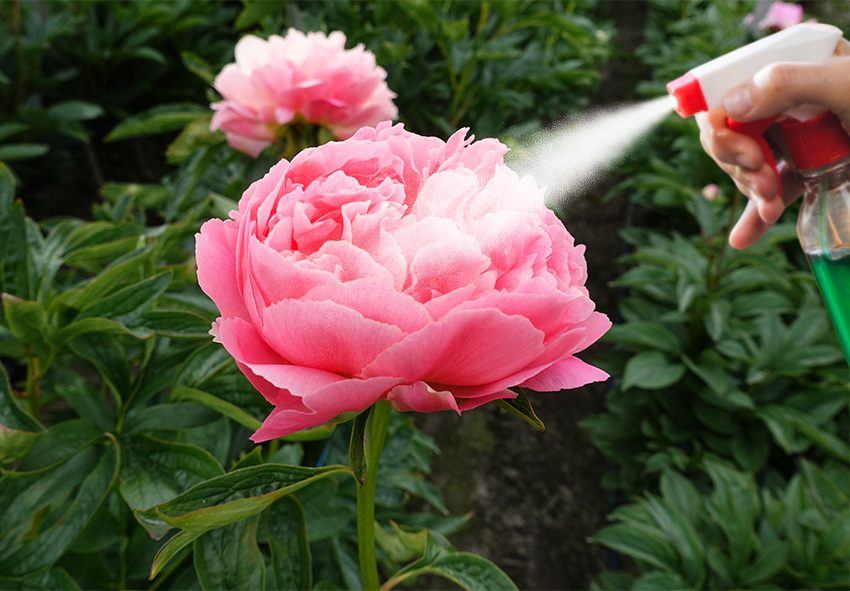
Fragrant Peonies are resilient plants, but they can encounter several common issues that affect their growth and blooming. Problems such as a lack of flowers, yellowing leaves, or drooping stems often result from improper planting, watering, or nutrition. Fortunately, most of these issues have straightforward solutions that can restore your peonies’ health and beauty.
One of the most common problems is peonies not blooming. This often happens when the plant is buried too deep, the soil lacks nutrients, or excess nitrogen encourages leaf growth instead of flowers. To fix this, ensure the buds (eyes) are only 1-2 inches below the soil surface, amend the soil with compost, and use a phosphorus-rich fertilizer in early spring.
Yellowing leaves or weak growth usually indicate overwatering or a nutrient deficiency. Improving soil drainage and only watering when the top inch is dry can prevent root rot. A balanced 10-10-10 fertilizer applied in spring helps provide essential nutrients.
Peonies often fall over due to their large, heavy blooms. Supporting them with peony cages or stakes early in the season keeps the stems upright. Ensuring they receive at least six hours of sunlight daily will also strengthen growth and prevent weak, bending stems.
Troubleshooting Guide
Peonies may encounter challenges that affect their growth and flowering. If your plant is not blooming, has weak or yellowing leaves, or collapses under the weight of its flowers, targeted care adjustments can help. Addressing these issues promptly ensures the plant remains strong, vibrant, and capable of producing lush, long-lasting blooms.
Issue 1: Fragrant Peonies Not Blooming
A lack of blooms is one of the most frustrating problems for peony growers. This issue is often caused by improper planting depth, poor soil conditions, or excessive fertilization.
Common Causes:
- Planting too deep, which prevents buds from emerging properly.
- Poor soil quality lacking essential nutrients.
- Overfertilization, especially with nitrogen-rich fertilizers that promote foliage over flowers.
Solutions:
- Replant peonies so that the growth buds (eyes) sit just 1-2 inches below the soil surface.
- Amend soil with compost or organic matter to improve drainage and nutrient content.
- Use a phosphorus-rich fertilizer in early spring to promote flowering while avoiding excessive nitrogen.
Issue 2: Yellowing Leaves or Weak Growth
When peony leaves turn yellow prematurely or growth appears weak, the plant is likely suffering from improper watering or a nutrient imbalance.
Common Causes:
- Overwatering leads to root rot and poor oxygenation.
- Nutrient deficiency, particularly a lack of potassium or iron.
Solutions:
- Improve drainage by planting in well-draining soil and avoiding waterlogged conditions.
- Water only when the top inch of soil is dry, rather than on a fixed schedule.
- Apply a balanced fertilizer (10-10-10) in spring to provide essential nutrients for healthy growth.
Issue 3: Peonies Falling Over
Fragrant Peonies are known for their large, heavy blooms, which can cause stems to bend or break if not properly supported.
Common Causes:
- Large, double-flowered varieties that become top-heavy.
- Weak stems due to insufficient sunlight or improper nutrition.
Solutions:
- Install peony supports or cages early in the season before stems grow tall.
- Ensure the plant receives at least six hours of sunlight daily to strengthen stems.
- Fertilize in early spring to promote sturdy, upright growth without excessive foliage.
Propagating Fragrant Peonies: Growing More Beautiful Blooms
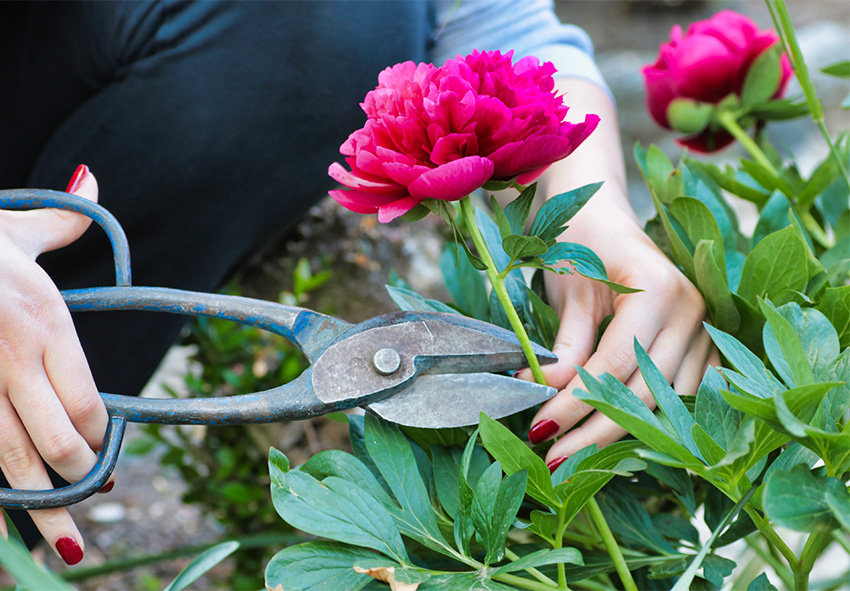
Propagating fragrant peonies allows gardeners to expand their collection and enjoy even more of these exquisite, aromatic blooms. Peonies are known for their long lifespan, and by multiplying them, you can ensure a continuous supply of vibrant flowers for years to come. There are two primary methods for propagating peonies: division and seed propagation.
Dividing peony clumps is the most reliable and efficient method, as it produces plants that bloom in just a few years. When dividing, you separate healthy sections of the root that contain at least three to five eyes, ensuring that each new plant has enough energy to thrive. This method can be done every 3-5 years to rejuvenate older plants and keep them vigorous.
Alternatively, you can propagate peonies from seeds, though this method is slower and requires more patience. After collecting seeds from mature flowers, they need to undergo a period of cold stratification to break dormancy. Seed-grown peonies can take 2 to 5 years to bloom, but the process offers an exciting opportunity to create new, unique peony varieties.
Both methods, when done properly, will reward you with beautiful fragrant peonies that enhance your garden’s beauty and fragrance.
How to Propagate Fragrant Peonies Step-by-Step
The easiest and most reliable way to propagate peonies is by dividing mature plants, which ensures faster flowering. Another method is growing peonies from seeds, though it requires patience as they take several years to bloom. Both techniques, when done correctly, lead to beautiful, thriving peony plants.
Step 1: Dividing Peony Clumps (The Best Method)
Dividing peony clumps is the best way to propagate peonies while maintaining their original characteristics. This method should be done in early fall when the foliage has died back, allowing the plant to establish before winter. Carefully dig up the peony clump, ensuring minimal root damage. Use a sharp knife to separate sections of the tuber, making sure each piece has at least three to five eyes, which will develop into new stems. Replant immediately in a well-drained location, positioning the eyes just below the soil surface. Water thoroughly and apply mulch to protect the roots over winter.
Step 2: Growing Fragrant Peonies from Seeds
Growing peonies from seeds is a rewarding but slow process. The seeds require a period of cold stratification to break dormancy, mimicking natural winter conditions. Sow seeds in a well-draining mix and place them in a cool location for several weeks before moving them to warmer conditions. Germination can take several months, and it typically takes between two to five years for seed-grown peonies to flower. While this method requires patience, it can produce unique new varieties with unexpected color and fragrance variations.
Frequently Asked Questions (FAQs) about Fragrant Peonies
1. How much sunlight do fragrant peonies need to bloom well?
Fragrant peonies thrive in full sun, needing at least 6 hours of direct sunlight per day to bloom at their best. In regions with intense summer heat, some light afternoon shade can help preserve the blooms longer. Without enough sunlight, peonies may develop fewer buds, or the flowers might be smaller and less fragrant. Make sure to plant them in a spot that receives ample morning or midday sun for optimal flowering.
2. How do I care for fragrant peonies after blooming?
After blooming, remove spent flowers (deadheading) to encourage energy to return to the roots instead of seed formation. Keep the foliage intact throughout the season, as it continues to photosynthesize and strengthen the roots for next year. Water during dry spells and avoid cutting the foliage until it turns yellow in fall. Apply mulch and compost in late fall to insulate the roots and support next season’s growth.
3. Can I grow fragrant peonies indoors?
While fragrant peonies are best suited for outdoor gardens due to their size and sun needs, you can grow them indoors in containers if you have a very bright space. Use a large pot with good drainage, nutrient-rich soil, and place the plant in a sunny window that receives at least 6 hours of light per day. Keep in mind that indoor-grown peonies may produce fewer blooms and require a cool winter dormancy period.
4. Why aren’t my fragrant peonies blooming?
Several factors can cause peonies not to bloom: planting too deep, insufficient sunlight, overcrowding, or immature plants. Ensure the eyes (buds) on the roots are no more than 1–2 inches below the soil surface. Make sure your plant is getting enough sun and has space to grow. Also, be patient—peonies may take 2–3 years to become established and produce full blooms, but the wait is well worth it for their stunning fragrance.
5. How can I order Holland fragrant peonies from your online store?
Ordering Holland fragrant peonies from our online store Dutch-bulbs.com is simple and convenient. Visit our website and browse our selection of peonies varieties, including those sourced from Holland for their exceptional quality and beauty. Once your order is confirmed, our team will carefully pack and ship your Holland fragrant peony bulbs directly to your doorstep, ensuring they arrive fresh and ready for planting.
Published: 09.04.2025
